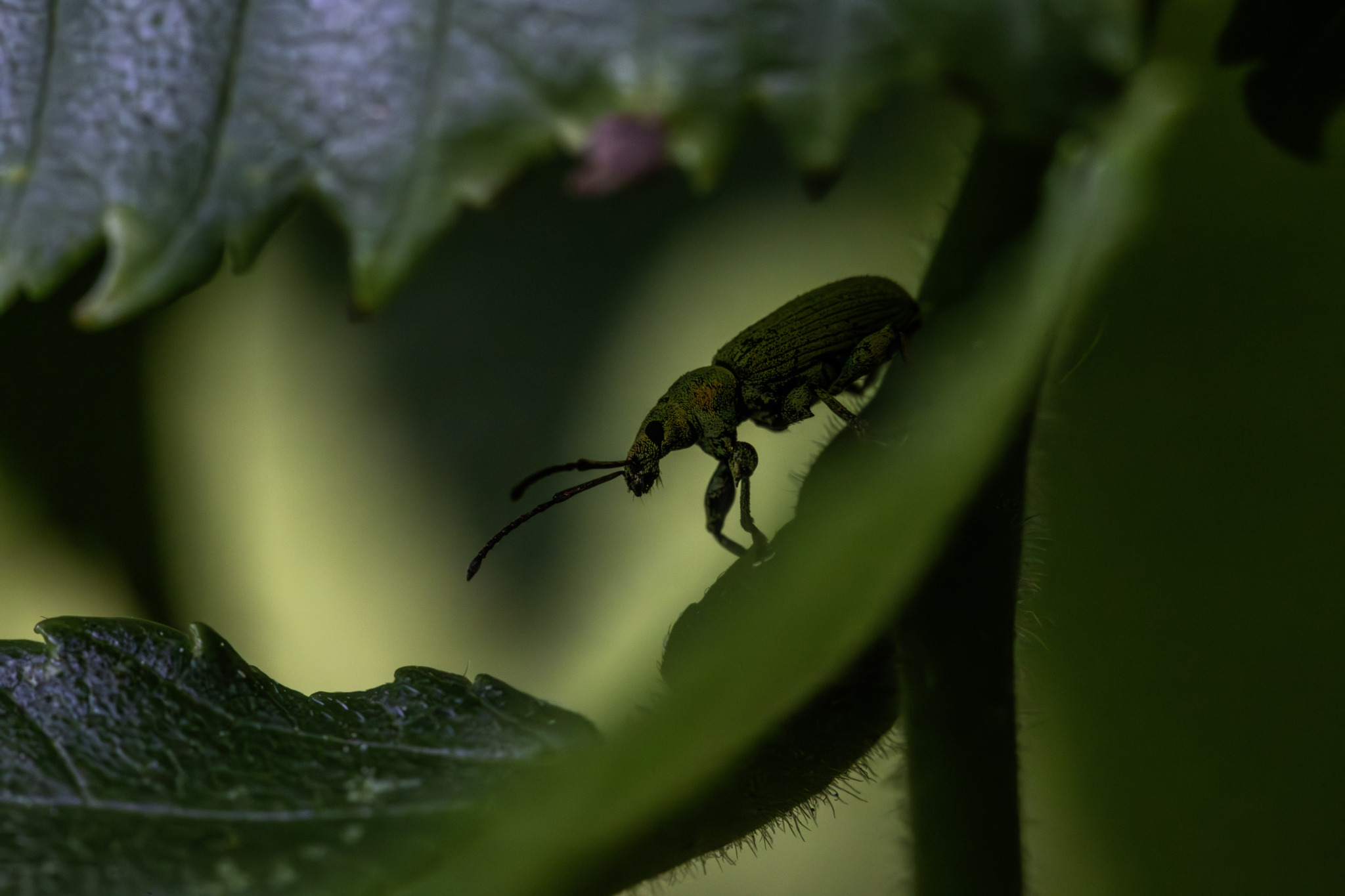Absolutely — no pictures, just a clear and detailed overview.
Here is the deep profile you requested:
🪲 Nettle Weevil (Phyllobius pomaceus)
🔹 Taxonomy
- Order: Coleoptera
- Family: Curculionidae (True Weevils)
- Subfamily: Entiminae
- Genus: Phyllobius
- Species: P. pomaceus
🌍 Distribution
- Widespread in Europe
- Especially common in northern and temperate regions
- Also found in introduced populations in parts of North America
🏞️ Habitat
- Prefers moist, grassy environments:
- Wet meadows
- Woodland edges
- Riversides and marshy areas
- Hedgerows
- Often located where nettles grow abundantly
🌱 Host Plants & Ecology
Primarily associated with:
- Stinging nettle (Urtica dioica)
- Less frequently on Urtica urens and occasionally raspberry species (Rubus spp.)
Feeding roles:
- Adults: chew the edges and outer tissue of leaves
- Larvae: feed unseen underground, feeding on roots
→ Can cause noticeable leaf damage in nettle patches but rarely of ecological concern
✨ Identification (for field study)
- Size: 6–9 mm
- Body typically greenish due to metallic scales (but can wear off → appears brown/blackish)
- Rostrum short (typical weevil snout)
- Legs often pale or reddish with darker joints
- Antennae elbowed with distinct, narrow club
Key distinction from similar Phyllobius spp.:
→ Very tightly linked to nettles, especially in damp areas
🔄 Life Cycle
- Adults emerge in spring (April–June main period)
- Mating occurs on host plants
- Eggs laid in soil beneath nettles
- Larvae feed on roots, protected from predators
- Pupation in soil
- Typically one generation per year
- Adults may overwinter depending on region
🧠 Behavior & Adaptations
- Very jumpy: uses rapid leg extension to catapult away when disturbed
- Can feign death (thanatosis), dropping into vegetation
- Strong ecological specialization helps avoid competitors
🔬 Ecological Role
- Supports predator populations:
- Ground beetles
- Birds
- Parasitic wasps
- Acts as a herbivore regulator of dominant nettle stands
- Contributes to soil nutrient cycling via larval root grazing
⚖️ Conservation
- Common and stable
- Thrives in human-modified environments where nettles increase
- No conservation concern
✅ Quick Summary
| Feature | Detail |
|---|---|
| Main Plant | Stinging nettle |
| Active Period | Spring–early summer |
| Habitat | Damp grasslands, woodland edges, riverbanks |
| Impact | Cosmetic leaf damage only |
| Status | Widespread & abundant |
Visited 796 times, 46 visit(s) today
Views: 1374
Subscribe to the newsletter:
